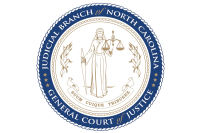Opponents win concessions in first round of quarry permit fight
The state has delayed issuing a necessary permit and instead is asking Harrison Construction to provide a slew of additional information to ensure the expansion won’t create an environmental hazard or safety risk.
“They need to be more responsible. We felt that and we proved that,” said Suzanne Hendrix, one of dozens of neighbors who organized against the quarry. “It took a big effort on everyone’s part.”
From the impacts of blasting on drinking wells to the stability of its massive rock walls, the quarry must address a laundry list of concerns before the N.C. Division of Land Resources will entertain the expansion permit.
The quarry received a letter from the state in late June requesting additional information and has 180 days to reply. Judy Wehner, assistant state mining specialist, said she has no indication from the quarry when it might respond. The quarry did not return phone calls and emails seeking comment.
Neighbors of the quarry are optimistic, but also skeptical.
“Their track record isn’t good,” said Polly Leatherwood, 69, who has lived near the quarry her whole life. “If they do what they are supposed to, it would be fine.”
Related Items
But state environmental inspectors visit too infrequently —with a lapses spanning more than two years by some agencies and four years by others — and aren’t diligent enough when they do, according to neighbors.
“They need to follow up on them and see they do what they say they are going to do. That’s the biggest thing,” said Leatherwood.
Ronnie Deweese agreed the state’s request for additional information won’t work unless regulatory oversight is ramped up going forward.
“They can provide all the information they want, but if they don’t have an inspection every so often it won’t do no good,” said Deweese, who lives near the quarry.
Shoring up quarry walls
The biggest issue the quarry must address is the stability of the quarry walls, which tower hundreds of feet in the air. Last year, a slab of rock hundreds of feet wide and tall came crashing down at the quarry. The potentially fatal slide could have been prevented had the quarry practiced more careful geotechnical monitoring, according to geologists and mine inspectors that visited the site in the aftermath.
But there are no state or federal engineering standards that apply to quarries, nor do state or federal agencies oversee the blasting and excavation plans. There are no rules limiting how steep or tall quarry walls can be.
In the new permit, however, the state took the quarry to task over its plans to stabilize and shore up the slide area.
Plans submitted by the quarry “contained insufficient information to assess the stability of rock soils and slopes,” according to the state’s letter. The quarry must provide more detailed engineering plans and slope assessments before the permit can proceed.
Quarries generally are not required to hire geotechnical engineers to monitor their operations, yet in this case, the state wants to see a slope expert on hand throughout the slide cleanup.
“Unexpected planes of weakness in the bedrock or other unexpected conditions may be discovered as work progresses,” the letter states.
Rick Wooten, a state geologist and mountain landslide expert based in Asheville, provided the engineering critique of the quarry’s plans on behalf of the state mining agency. Opinions of state geologists are not typically sought by the agency that grants quarry permits.
Wooten also pointed out that the rock being mined is not in fact pure granite, as claimed by the quarry in its permit. Wooten said the “metamorphized sedimentary and igneous rock in the pit is much more structurally complex,” which affects how it behaves.
In order to shore up the slide that destabilized a major part of the quarry, quarry officials say they must expand the current boundaries of the quarry. Their plans call for recontouring the sheer vertical walls of the quarry with a more gentle grade. To do so, they say it is necessary to shave off the ridgeline above the quarry.
The expansion would bring operations closer to the doorstep of the Lickstone community, prompting the opposition.
State wants more information
The state found the quarry’s application wasn’t thorough enough in some areas. The state deemed the sediment and erosion control plan insufficient to control runoff, for example.
Following complaints by neighbors about blasting, the state wants to see a blasting analysis and detailed monitoring plan by a qualified blasting expert — something it had not asked for before.
The state also alerted the quarry that it may be required to install an air quality monitor at the site to measure dust particles, which have been a chief source of complaints. Such a monitor has been required at a quarry site in Spruce Pine similarly accused by neighbors of excessive dust.
“If they set up a monitoring device, we would feel better about it,” Rogers said. “We would know then how much dust is getting transferred onto us. Right now it is hearsay. It is our word against them.”
The state also acted on concerns from neighbors who fear blasting could disrupt the flow of their springs or wells as the quarry inches closer to their homes. The quarry was asked to “provide proof” that the expansion of the quarry wouldn’t harms the springs and wells.
But Michael Rogers doesn’t know how they could provide that kind of assurance.
“It is a fragile system really,” Roger said. Aquifers in the mountains are notoriously hard to read, with veins of water running through the rocks like a maze. A jarring blasting could cause one of the veins to collapse and cut off a spring or well’s flow, Rogers said. Rogers said he wants something in writing from, the quarry that they will dig him a new well if his spring is disrupted.
At least two of the quarry’s neighbors believe that blasting compromised their wells. One suffers from discolored water that stains her laundry. Another had her well suddenly go dry following a week of blasting. Polly Leatherwood said her well didn’t diminish in volume slowly, but just went dry all of a sudden “like you turned the water off.”
Leatherwood called the quarry, and someone came to see her but told her she would have to prove it was their fault.
The state also sent the quarry back to the drawing board on safety fencing around the top of the quarry walls. A fencing plan was required as part of the original application, but the quarry asserted it was unnecessary.
“The heavily wooded, surrounding mountain makes inadvertent public access to the highwall area unlikely,” the quarry wrote.
The state apparently wasn’t satisfied. It has reiterated the need for fencing and told the quarry to draw up a plan.
A high school freshman, Hannah Parrott of Waynesville, had raised this issue during a public hearing on the quarry’s permit, pointing out the threat the unfenced highwalls pose to animals.
A couple of the state’s critques were a result of typos in the quarry’s application, like failing to put north arrows on its maps or listing different numbers for how many acres will be impacted with the expansion.
Deweese said it will likely be up to the neighbors of the quarry to keep the pressure on.
“We’re going to have to make them stay the way they ought to be because they have had the run of things so long,” Deweese said.









